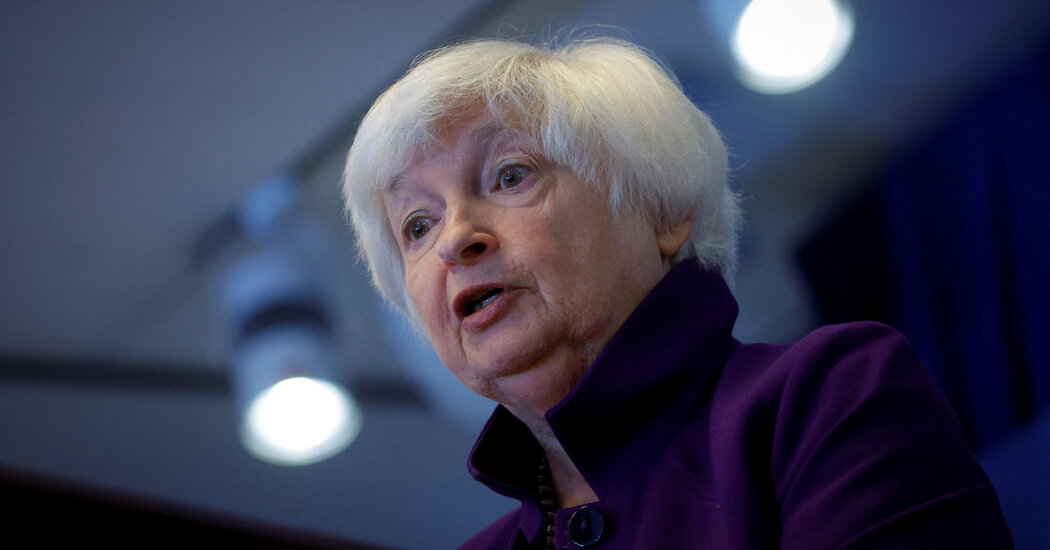Offshore Wind Runs Into Rising Costs and Delays
Vattenfall, a Swedish energy company, has for years been doing preliminary work for what would be one of the world’s largest offshore wind complexes, in the North Sea off eastern England.
Now, there are questions about whether this project will ever be built. Last month, Vattenfall said it would halt the first of three phases of the wind farm complex, the Norfolk Offshore Wind Zone, which is projected to provide power for about four million homes in Britain.
Vattenfall blamed rapidly escalating costs for equipment and construction expenses, which they said had climbed as much as 40 percent over the past few quarters. The estimated price tag for the three phases has risen to 13 billion pounds, or about $16.6 billion, from £10 billion.
“With the new market conditions, it simply doesn’t make sense to continue the project,” Helene Bistrom, head of business area wind at Vattenfall, said during a video presentation. The decision led Vattenfall, which is owned by the Swedish government, to write-down more than $500 million.
Vattenfall’s pullback added to the widespread alarm unfolding across the offshore industry about rapidly increasing costs, due partly to supply chain issues and rising demand.
In recent months, several developers in the United States have sought to renegotiate power supply contracts, scrapping them in at least one case, and Orsted, a Danish company that is the world’s largest offshore wind developer, warned that a major project, Hornsea 3, in Britain could be “at risk” without more government support.
With interest rates shooting up, financing the billions of dollars in investment that go into these installations has also become far more expensive.
On Monday, the turbine maker Siemens Energy reported a net loss of 2.9 billion euros ($3.2 billion) for the April-June quarter, largely because of problems tied to “increased product costs and ramp-up challenges” in its offshore energy business.
“There’s very few projects that are immune to the inflationary impact,” said Finlay Clark, an analyst at Wood Mackenzie, a consulting firm.
Rising costs for wind developers are a problem for governments in Europe, the United States and elsewhere. Many countries are counting on an enormous and rapid expansion of offshore wind to achieve a significant portion of their renewable energy goals.
“We are wasting time here,” Morten Dyrholm, group senior vice president for corporate affairs at Vestas Wind Systems, the Danish turbine maker, said of the industry’s problems. “We need to grow the sector quite dramatically.”
Mr. Dyrholm and others in the industry say the inflation problems are a warning sign that governments need to change their system of awarding offshore wind licenses.
The procedures for obtaining the rights to build wind farms vary in different countries but often involve an auction of seabed leases followed, sometimes years later, by agreements that set the price paid by power companies for the electricity generated.
These arrangements, designed to drive down power prices for consumers and, often, to maximize revenues from lease sales, should be broadened to take into account other factors, some industry leaders say. An auction for seabed rights awarded by Scotland in 2022 is cited as a model because it put greater emphasis on factors like the ability of wind companies to develop suppliers, and the experience of the companies.
The debate could open the way for more power deals with corporations like Amazon and Microsoft, whose data centers are hungry consumers of electricity. Large businesses might be more flexible partners for wind developers than government officials who tend to say “this is the rule,” said Deepa Venkateswaran, a utilities analyst at Bernstein, a research firm.
Renewable energy programs like Britain’s — which is designed to encourage financial backing by providing a guaranteed price to wind developers, and also to gradually drive down charges paid by consumers — attracted billions in investment when inflation was low. Now, in a very different world, after the disruptions of the pandemic and the war in Ukraine, Britain is taking fire for policies that could make wind projects uneconomical.
“I am afraid the U.K. has gone from being one of the best governments in Europe on offshore wind to one of the worst,” said Giles Dickson, chief executive of WindEurope, a trade body.
A British government spokesman responded: “We understand there are supply chain pressures for the sector globally, not just in the U.K., and we are listening to companies’ concerns.”
The inflation problems are mainly hitting offshore wind farms in late stages of development rather than those already generating power.
Offshore projects can require a decade to progress from planning stages to generating power. That means agreements on issues like the power price may be years old before the turbines are in place and generating electricity.
That system worked when inflation was negligible and demand for turbines and other equipment was relatively subdued. Now, as a growing number of developers look to secure everything necessary to undertake the projects — from wind turbines, which cost millions of dollars, to the services of specialized construction ships, to bank financing — they discover that the price tags have suddenly soared. Mr. Dyrholm estimates that prices of wind turbines alone have increased 30 percent in the past year.
“The costs have risen, and you have a mismatch,” said Bernard Looney, chief executive of BP, which is an investor, with Equinor, a Norwegian company, in three offshore wind projects in the Atlantic that would supply power to around two million households in New York State. Equinor and BP have petitioned state authorities to renegotiate their power contracts.
Similarly, developers in Britain and elsewhere don’t seem to want to completely jettison projects. Many are trying to renegotiate the deals or push governments to alter the formats of future auctions. Some are terminating existing contracts to supply power to utilities and seeking new ones — or threatening such moves, figuring there will be plenty of demand for clean power in the future.
Walking away from contracts signed years ago has become “the prudent commercial course” even with the risk of financial penalties, SouthCoast Wind, a project part-owned by Shell that would be located in the Atlantic near Martha’s Vineyard, in Massachusetts, said in a statement in June.
Another Massachusetts proposal, Commonwealth Wind, which is owned by Avangrid, a U.S. subsidiary of the Spanish energy giant Iberdrola, has terminated its power supply contract and plans to seek a new deal in a future auction, the company said.
“The economics are challenging,” said Stephanie McClellan, executive director of Turn Forward, an offshore wind advocacy organization in the United States.
Despite the soured deals, interest in offshore wind remains strong. In a recent auction in Germany, BP and TotalEnergies in France agreed to pay around $14 billion over three decades for offshore tracts.
The German deals differ from others because the companies are simply paying for the rights to develop sea bottom, and they will negotiate what they get paid for the electricity at a later day.
Such deals are attractive to a corporate giant like BP, which has the financial firepower to make them happen and would be freer to do what it wants with the power. Mr. Looney said he hoped to steer away from the long-term power contracts, preferring instead to try to squeeze more value from wind-generated electricity by using it to make green hydrogen, a still scarce clean fuel, or charge electric vehicles.
“We’d like to do something with those electrons; take them and put them to use,” he said.
But there are only a handful of companies with the heft of BP and TotalEnergies. Whether nations can achieve their offshore ambitions through such commercial deals remains to be seen. Critics say that charging high prices for leases will lead to higher power prices for consumers.


